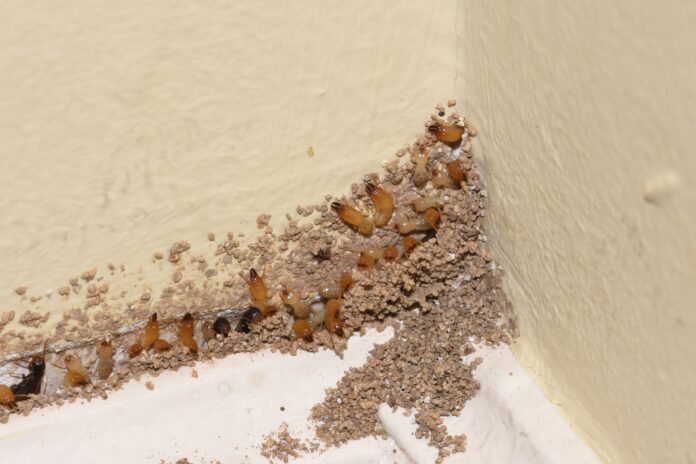
Termite infestations can be a persistent and frustrating problem for homeowners.
Understanding the reasons why termites keep coming back is crucial for effective termite control and long-term protection of your home.
By identifying the root causes, homeowners can take proactive steps to prevent recurring infestations.
1. Moisture Problems
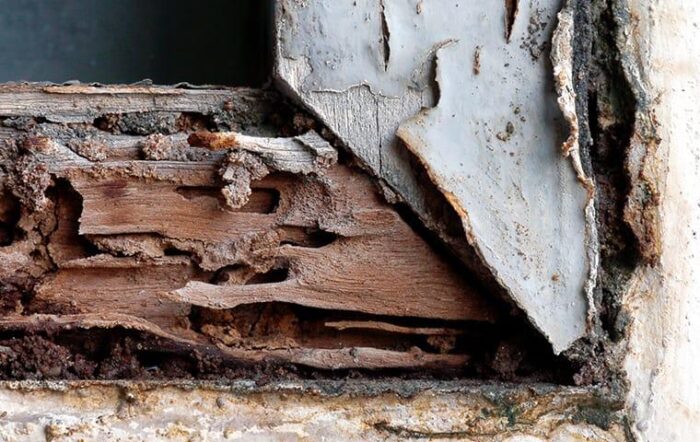
Termites are highly attracted to moisture, which provides them with the ideal environment to thrive and reproduce.
Common sources of moisture in and around homes include leaks, poor drainage systems, and high humidity levels.
Leaky pipes, faulty gutters, and inadequate ventilation can all contribute to increased moisture levels, creating a hospitable environment for termites.
Addressing moisture issues is essential for effective termite control. Homeowners should regularly inspect their property for signs of leaks and ensure that gutters and downspouts are functioning properly to direct water away from the foundation.
Installing dehumidifiers in basements and crawl spaces can help reduce indoor humidity levels.
Additionally, improving ventilation in attics and other enclosed spaces can prevent moisture buildup. By taking these steps, homeowners can make their homes less attractive to termites and reduce the likelihood of infestations.
2. Wood and Cellulose Sources
Termites are naturally drawn to wood and cellulose materials, which serve as their primary food sources. Common wood sources in homes include firewood stacks, wooden structures, and paper products.
Firewood stored too close to the house, wooden decks, fences, and even mulch can attract termites. Paper products such as cardboard boxes, old newspapers, and books also provide cellulose that termites feed on.
To reduce these attractants and enhance termite control, homeowners should store firewood at least 20 feet away from the house and elevate it off the ground.
It’s important to use treated wood for any outdoor structures and to regularly inspect and maintain these structures for signs of termite damage. Inside the home, minimizing the storage of paper products and keeping them off the floor can help deter termites.
By reducing the availability of wood and cellulose, homeowners can make their homes less appealing to termites.
3. Incomplete Treatment
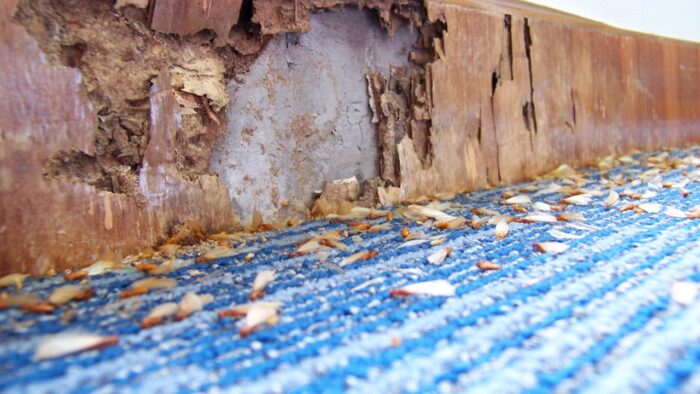
Effective termite control requires comprehensive treatment. Incomplete or improper termite treatment can lead to reinfestation, as termites can quickly rebound if not fully eradicated.
Many homeowners attempt DIY treatments, which often fall short of addressing the entire termite problem. Incomplete treatments might kill some termites but leave the colony intact, allowing it to recover and continue to cause damage.
Professional pest control services are crucial for thorough termite treatment. Pest control experts have the knowledge, experience, and tools to identify the full extent of the infestation and apply the appropriate treatments.
They can also provide follow-up inspections and treatments to ensure that the termites are completely eradicated. By relying on professional termite control services, homeowners can prevent the recurrence of infestations and protect their property from further damage.
4. Subterranean Colonies
Subterranean termites are particularly challenging to control due to their underground colonies. These termites build extensive tunnel systems that allow them to access food sources above ground while remaining hidden.
Their colonies can be located several feet underground, making detection and treatment difficult.
Even if termites are eliminated from the visible parts of the home, underground colonies can lead to recurring infestations as termites continue to emerge.
To effectively control subterranean termites, it is essential to treat both the home and the surrounding soil. This often involves applying liquid termiticides to create a barrier around the foundation, as well as installing bait stations to monitor and eliminate termite activity.
Regular monitoring and maintenance of these treatments are necessary to ensure long-term termite control. By addressing the subterranean colonies, homeowners can significantly reduce the risk of recurring infestations.
5. Swarmers and New Colonies
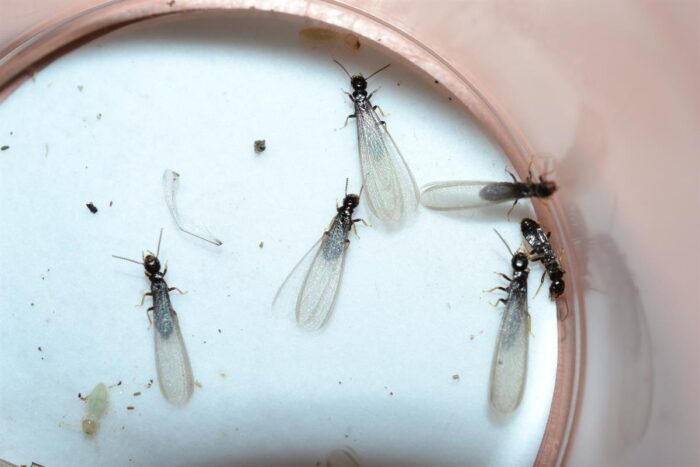
Swarming termites, also known as alates, play a key role in spreading infestations and establishing new colonies. Swarmers are reproductive termites that leave their existing colony to mate and start new colonies.
This behavior typically occurs seasonally, often in the spring and early summer, when environmental conditions are favorable. Homeowners may notice swarms of winged termites around their property during this time.
Preventing swarmers from establishing new colonies is an important aspect of termite control. Homeowners should be vigilant during swarming season and take measures to seal any entry points that termites could use to access the home.
Installing screens on windows and doors, sealing cracks and gaps in the foundation, and repairing damaged wood can help prevent swarmers from entering the home.
Additionally, using outdoor lighting that does not attract termites can reduce the risk of swarming termites finding their way to the property. By implementing these preventative measures, homeowners can reduce the likelihood of new infestations.
6. Structural Vulnerabilities
Termites often gain entry into homes through structural vulnerabilities such as cracks, crevices, and other weaknesses.
These entry points provide easy access for termites to infest the home and cause damage. Common structural vulnerabilities include gaps around windows and doors, cracks in the foundation, and deteriorated wood.
Regular home maintenance and repairs are essential for preventing termite infestations. Homeowners should inspect their property for any signs of damage or potential entry points and address them promptly. Sealing cracks and gaps with appropriate materials, such as caulk or sealant, can help keep them out.
Reinforcing vulnerable areas with termite-resistant materials can also provide additional protection. By maintaining a well-sealed and structurally sound home, homeowners can reduce the risk of termite infestations and improve overall termite control.
7. Environmental Factors
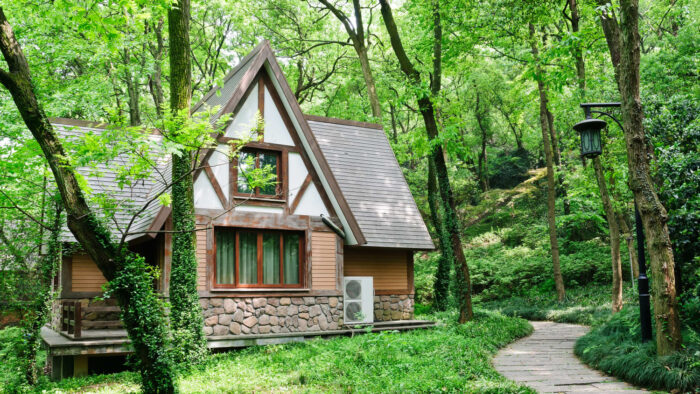
The location and surrounding environment of a home can significantly influence termite activity. Homes located near wooded areas, gardens, or other natural termite habitats are at a higher risk of infestations. Termites can easily migrate from these areas to nearby homes in search of food and shelter.
Adjusting landscaping practices can help minimize termite risk. Homeowners should avoid planting trees and shrubs too close to the house, as roots and branches can provide pathways for termites. Mulch, which retains moisture and provides a food source, should be kept away from the foundation.
Using termite-resistant plants and maintaining a clear zone around the home can also help deter termites. By considering environmental factors and making strategic changes, homeowners can reduce the likelihood of termite infestations and improve termite control efforts.
The Bottom Line
Understanding the key reasons why termites keep coming back is essential for effective termite control. Regular inspections and maintenance are crucial to preventing future problems and ensuring long-term termite control.










